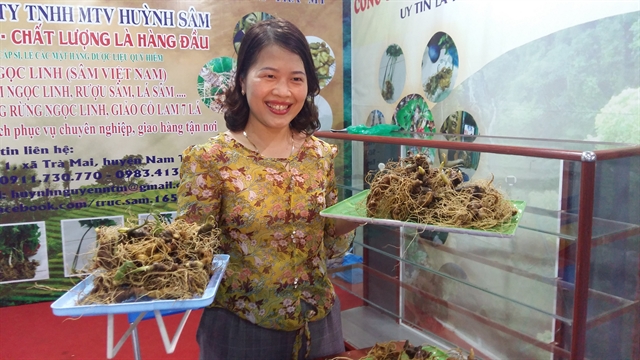 Economy
Economy
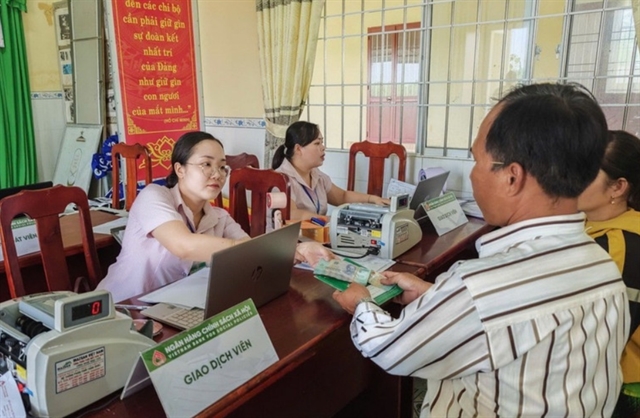
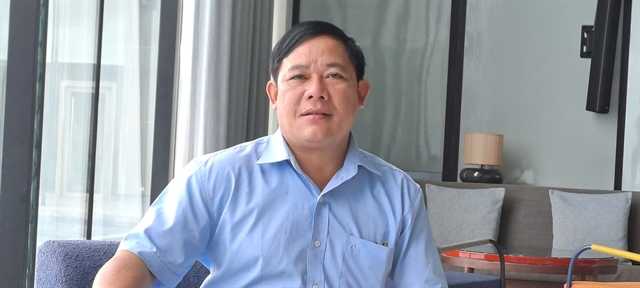 |
| Vice chairman of the Quảng Nam provincial Ngọc Linh ginseng association, Nguyễn Văn Lượng poses for photo at a conference on international tourism. The association has been building a plan on worldwide move for the ginseng. VNS Photo Công Thành |
After the Government approved the master plan for the development of Ngọc Linh ginseng in the central Quảng Nam Province, the province's mountainous Nam Trà My District has begun building a global trademark for the root.
Vice chairman of the provincial Ngọc Linh ginseng association Nguyễn Văn Lượng spoke with Việt Nam News on the worldwide move for the ginseng.
Quảng Nam Province and Nam Trà My District are well known for farming Ngọc Linh ginseng. Can you briefly outline some key achievements for the local development of the ginseng?
Communities in the mountainous district are growing 2,000ha of the national brand Ngọc Linh ginseng, providing at least 30 tonnes of produce each year. We have a total of 6,000 farmers, who are mostly from the Xơ Đăng ethnic group, working on ginseng farms in Trà Linh Commune – a key area of the ‘Gingseng Kingdom’ in Quảng Nam Province. Each household can produce 5kg of pure ginseng roots per year, which can be sold at VNĐ150 million per kilo at current prices. This means that each ginseng farming family could earn an income of VNĐ500 million from annual crops.
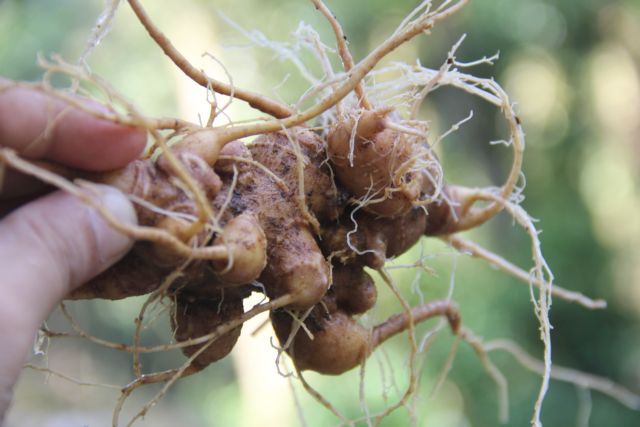 |
| A Ngọc Linh ginseng root is collected after one year of growth in Nam Trà My District, Quảng Nam Province. The ginseng is a major crop in Quảng Nam and Kon Tum Provinces. VNS Photo Công Thành |
Ngọc Linh ginseng grown in Quảng Nam and Kon Tum Provinces has been recognised as a national brand. What is the Quảng Nam Ngọc Linh Ginseng Association doing to promote the brand and boost the value of the herb?
Ngọc Linh ginseng has been given original product recognition including Geographical Indication (GI) by the National Office of Intellectual Property of Việt Nam under the Ministry of Science and Technology, as well as a QR Code of Origin certification. This helps customers identify original Ngọc Linh ginseng roots from fake products in the market.
We have been building a strategic plan for sustainable development of the ginseng with a focus on biodiversity conservation, environmental protection and forest value promotion. The association is also looking to maintain a stable market for the ginseng by improving awareness of its quality and of sustainable farming practices among community and farmers. Higher quality products earn better prices and provide maximum income for longer periods instead of unstable prices.
Ginseng needs access to global markets to boost production. What about international partnerships and cooperation in ginseng farming and marketing activities?
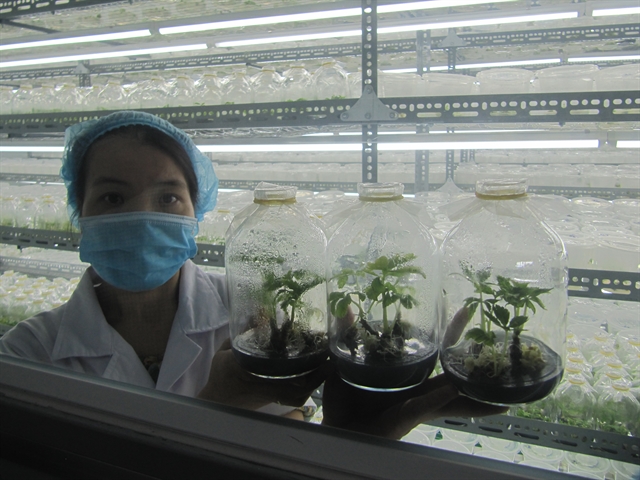 |
| An expert shows samples of Ngọc Linh ginseng plants at a research and development centre owned by Sâm Sâm company in Tam Kỳ City. The ginseng is made into different products including food, essential oils, capsules, tea and energy drinks. VNS Photo Công Thành |
We have been calling for investment and partnerships from leading investors such as Vin Group, TH, Nutri Food, Viettel and FPT in various ginseng farming cooperation projects on digital transformation, added value production and infrastructure development. The Association and WWF started working together on projects to farm ginseng while protecting forests and wildlife species, because ginseng grows best only in the canopy of primary forests.
Nam Trà My District had previously signed a Memorandum of Understanding (MoU) with Hamyang, a locality in Korea specialising in ginseng growing, to share experiences farming ginseng. The district is also learning from partners in China and Japan about how best to grow ginseng.
The association has also started an ambitious plan for industrial production of the local ginseng by introducing the first factory in Tam Anh Industrial Park in Tam Kỳ City.
The US$5.4 million factory, which was built by Sâm Sâm Company, can produce capsules, essential oils, cosmetics, drinks and tea and food supplements, all made from ginseng roots.
The factory can provide five million Ngọc Linh ginseng plants per year out of its research and development centre.
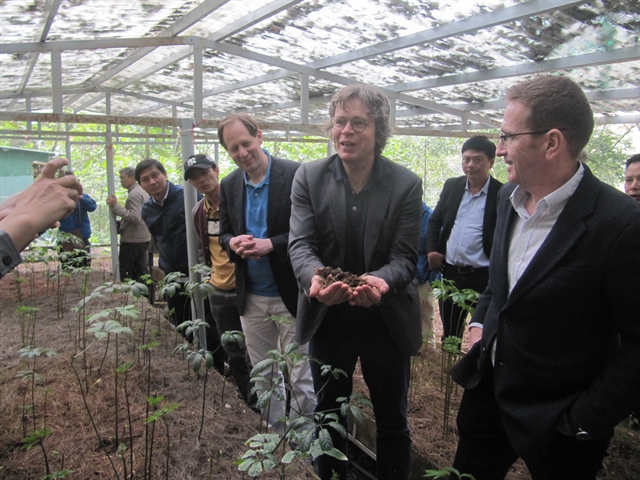 |
| Experts from the WWF at a Ngọc Linh ginseng growing area in Nam Trà My District, Quảng Nam Province. The area is owned by Sâm Sâm Company for industrial production in the near future. VNS Photo Công Thành |
The association and the province have been asking the National Assembly to create a legal framework for Vietnamese ginseng, or Ngọc Linh ginseng (Panax vietnamensis) to protect the national herbal medicine brand as well as help promote the special 'national treasure'.
According to the association, the law should give guidelines on conservation, farming, testing, certification, granting geographical indication, protection and promotion of the valuable local plant.
Quảng Nam provincial authorities have proposed a plan for developing infrastructure projects, including an upgrade on key roads linking the ginseng farming zone, as well as ginseng-related tourism, factories and markets worth a total of VNĐ2.4 trillion ($96 million).
Digital transformation has been cited as an effective solution to promote trade and production in many fields. What are some key activities of the association in using technological applications for ginseng farming and trading?
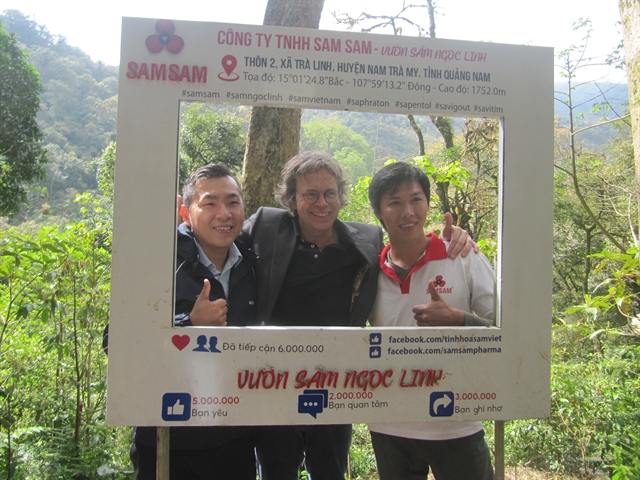 |
| A Ngọc Linh ginseng farm in Nam Trà My District, Quảng Nam Province. The farm is becoming an eco-tourism destination and educational experience for tourists and students. VNS Photo Công Thành |
Last year, Nam Trà My District debuted an e-commerce platform for Ngọc Linh ginseng and other medicinal herbs and produce from the district. Meanwhile, online trading and social network models are widely used by traders and farmers to sell products from the mountainous region in big trading centres in cities and provinces nationwide.
The association is recruiting 2,000 ginseng farmers as members.
According to the association, the true value the province's Ngọc Linh ginseng could reach up to $10 million. VNS



